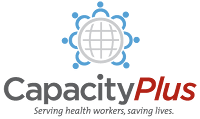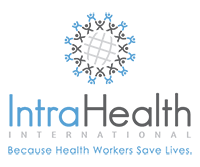HIV/AIDS Workplace Interventions
Who, then what? The need for interventions to help young people with perinatally acquired HIV disclose their HIV status to others
There has been considerable interest in paediatric HIV disclosure. This is the process leading to full disclosure (when the condition is named for the HIV-positive child, usually by a caregiver or healthcare worker). WHO guidelines state that children should be aware of the name of their condition by the age of 12, with younger children told their status incrementally to accommodate their cognitive skills and emotional maturity in preparation for full disclosure.
- 655 reads
Systematic Evidence Review to Support Development of Policy Guidelines for Improving Health Worker Access to Prevention, Treatement, and Care Services for HIV and TB
The objective of this review was to ascertain if priority access to HIV and/or TB services should be provided to health care workers as well as whether workplaces should provide programs reducing stigma and/or discrimination for all health care workers. [from abstract]
- 1610 reads
Caring for the Caregivers: Models of HIV/AIDS Care and Treatment Provision for Health Care Workers in Southern Africa
This article describes 3 staff care programs that provide convenient, confidential, and holistic care for HIV-infected health care workers and health care workers affected by caring for HIV-infected patients. [from author]
- 1371 reads
Outcome Assessment of a Dedicated HIV Positive Health Care Worker Clinic at a Central Hospital in Malawi: a Retrospective Observational Study
This study evaluates outcomes of a dedicated health care worker HIV clinic in Malawi against the perceptions, levels of awareness and barriers for uptake to care for health care workers attending the general HIV clinic. [from abstract]
- 6574 reads
Joint WHO ILO UNAIDS Policy Guidelines for Improving Health Workers' Access to HIV and TB Prevention, Treatment, Care and Support Services
Despite being workers on the front line responding to the public’s HIV and TB care needs, health workers themselves often do not have access to HIV and TB services. These guidelines aim to protect, retain and empower health workers in dealing with the dual threat of HIV and TB and reinforce good practicies for health workers who are living with HIV and/or TB. [adapted from introduction]
- 5696 reads
Healthy Images of Manhood: a Male Engagement Approach for Workplaces and Community Programs Integrating Gender, Family Planning and HIV/AIDS
This paper describes a project that has implemented an integrated male engagement program to address gender and family planning/reproductive health in a workplace HIV/AIDS Program. [from author]
- 13461 reads
HIV/AIDS Services through the Workplace: a Survey in Four Sub-Saharan African Countries
This study cuts across countries and quantifies the range of service provision types and mechanisms used by sub-Saharan companies that are diverse in terms of size, industry, and national origin. The study results systematically quantify which services are actually being offered, and how companies actually finance those services. The study also explores some motivators for offering workplace services and assesses why certain services and financing mechanisms are used predominantly by large companies. [from summary]
- 5370 reads
Caring for Caregivers: an HIV/AIDS Workplace Intervention for Hospital Staff in Zambia, Evaluation Results
There has been little research on HIV incidence or prevalence among hospital staff worldwide, and even less on modes of transmission among those infected. Recent evidence from South Africa suggests that HIV prevalence among health care personnel may not differ greatly from the general population. This evaluation study describes the significant effect of HIV morbidity and mortality among the workers in Zambia’s health care system. [adapted from introduction]
- 6030 reads
Swaziland Nurses the Wellbeing of Its Health Workers
Swaziland has taken the lead in caring for overburdened health workers with the opening of the first Wellness Centre in Manzini for them and their families. This article reports on this innovative response to the deepening crisis in human resources for health in sub-Saharan Africa. [adapted from author]
- 2605 reads
Human Resource Management and HIV/AIDS: a Study Among Share-Net Members
Published lessons learned from high HIV prevalence countries suggest that there are several key lessons available for any organisation that wishes to embark on an internal HIV/AIDS policy development process. This report contains first-hand experience by the Dutch Ministry of Foreign Affairs on its HIV/AIDS policy development process, plus comparative examples from various organisations. [from executive summary]
- 2878 reads
Implementing the ILO Code of Practice on HIV/AIDS and the World of Work
The manual is designed to help the ILO’s partners understand the issues and apply the ILO Code of Practice on HIV/AIDS and the world of work. The Code is at the core of the ILO’s Programme on HIV/AIDS, providing guidance to governments, employers and workers, as well as other stakeholders, on national action plans and workplace policies and programmes to combat HIV/AIDS.
- 3352 reads
ILO Code of Practice on HIV/AIDS and the World of Work
The objective of this code is to provide a set of guidelines to address the HIV/AIDS epidemic in the world of work and within the framework of the promotion of decent work. The guidelines cover the following key areas of action: prevention of HIV/AIDS; management and mitigation of the impact of HIV/AIDS on the world of work; care and support of workers infected and affected by HIV/AIDS; elimination of stigma and discrimination on the basis of real or perceived HIV status. [from preface]
- 4083 reads
HIV/AIDS Crisis: How Are Businesses Responding?
As part of the African Growth and Opportunitues Forum, this paper addresses how African businesses are responding to the HIV/AIDS crisis. It is imperative that businesses take immediate action to lessen the economic and social consequences of HIV/AIDS. If they take action, businesses can ensure that economic initiatives, such as the African Growth and Opportunities Act (AGOA) will succeed in stimulating economic growth in Africa. While both the public and private sector should have HIV/AIDS policies and programs, this paper addresses only the private business sector response to the epidemic. However, many of the actions, best practices, and conclusions discussed in this paper are also applicable to public sector policies and programs.
- 2875 reads
Business Response to HIV/AIDS: Impact and Lessons Learned
This report aims to provide assistance to business and associated partners in recognising the business case for further action against HIV/AIDS in the workplace and beyond. This is achieved through providing evidence of the impact that HIV/AIDS has on business activities and by highlighting the lessons learned from past and current responses. Guidance is provided in the form of policy tools, case studies and an examination of how to undertake successful partnerships in response to HIV/AIDS. This publication does not seek to provide standard models but tools to guide effective, efficient and needs-specific responses to HIV/AIDS.
- 21677 reads
Counting the Organizational Cost of HIV/AIDS to Civil Society Organizations
HIV/AIDS mainstreaming has traditionally been equated with adjusting programs to be more relevant to beneficiaries affected by HIV/AIDS. Bitter experience is demonstrating, however, that civil society organizations (CSOs) are not immune to the impacts of AIDS within their own organizations. Few local CSOs are responding adequately to this threat, partly because they simply do not know the extent of these costs. This paper suggests how CSOs in sub-Saharan Africa can build organizational resilience in order to survive the loss of valuable staff, time and money that HIV/AIDS will cause. It also concludes with practical recommendations for their donors in how they can move beyond being concerned bystanders. [publisher’s description]
- 3287 reads
Enhancing the Greater Involvement of People Living with HIV (GIPA) in NGOs/CBOs in India
The handbook is a resource collection of information sheets and participatory activities for NGOs working on HIV/AIDS who want to work towards a greater involvement of people living with HIV (GIPA) in their work. It aims at sensitising NGOs, building individual skills and organisational capacities so that NGO management, staff and volunteers can discuss and plan together in a participatory way how to meaningfully involve people living with HIV in their organisation. [from introduction]
- 8117 reads
HIV/AIDS and the Public Sector Workforce: an Action Guide for Managers
This action guide offers practical guidance on creating or expanding HIV/AIDS workplace programs for civil services. Human resource managers, employee welfare managers, medical officers and labor representatives in government ministries and agencies can use the guide to design and develop effective and appropriate HIV/AIDS prevention, care and support programs. Public Sector Workforce is intended to be a basic reference tool. Users can select chapters to assist with specific aspects of an HIV/AIDS program.
- 6059 reads
Private Sector Response to HIV and AIDS in Lesotho
This study attempted to determine the feasibility of a private sector led long-term intervention to reduce the HIV-infection rate among apparel workers and to provide care and support for those already infected. [author’s description]
- 20507 reads
Uptake of Workplace HIV Counselling and Testing: A Cluster-Randomised Trial in Zimbabwe
HIV counselling and testing is a key component of both HIV care and HIV prevention, but uptake is currently low. We investigated the impact of rapid HIV testing at the workplace on uptake of voluntary counselling and testing (VCT). [author’s description]
- 3293 reads
Guidance Note on Health Care Worker Safety from HIV and Other Blood Borne Infections
The safety of heath care workers (HCWs) who take care of people with HIV/AIDS and other infectious diseases is of paramount importance. Occupational transmission of blood borne infections is not regarded as a common problem in developed country settings, but this is not the case in resource poor countries where the incidence and impact of such exposures is under-reported and is now becoming appreciated as an important risk factor for HCWs.
- 7543 reads
Financial and Economic Costs of Scaling Up the Provision of HAART to HIV-Infected Health Care Workers in KwaZulu-Natal
This study provides evidence on the cost of providing HAART to health care workers and suggests that this strategy could reduce absenteeism and alleviate future staff shortages at moderate cost to hospitals. This is crucial, given the impending human resources crisis in health care in South Africa and the growing burden of HIV/AIDS. These cost estimates should be good indicators of the costs of extending antiretroviral therapy to health care workers in public-sector hospitals in KwaZulu-Natal. [author’s description]
- 13143 reads
Workplace HIV/AIDS Programs: An Action Guide for Managers
Many companies recognize the HIV/AIDS epidemic as a serious threat to productivity and profitability. [This guide] provides practical steps for developing and implementing workplace prevention and care programs that will serve both employees and managers. [from introduction]
- 2847 reads
Managing HIV/AIDS in the Workplace: Examples of Nine Non-Governmental Organizations in South Africa, Zambia and Zimbabwe
This study aims to examine the range of impacts the [HIV/AIDS] pandemic has had on selected NGO partners of Oxfam operating in South Africa, Zambia, and Zimbabwe, and to make recommendations useful to NGOs, including Oxfam, donors, and policy-makers based on its results. [author’s description]
- 5690 reads
Crafting Institutional Responses to HIV/AIDS: Guidelines and Resources for Tertiary Institutions in Sub-Saharan Africa
Four articles by separate authors on institutional responses and policies for managing HIV/AIDS in Africa, with specific emphasis on the role of tertiary institutions, such as schools and colleges. The articles are not specific to health training institutions, but are relevant to this context.
- 5187 reads
HRM Resource Kit
This toolkit includes a collection of HRM resources and links assembled for the Global Health 2005 conference. Most of the resources are in Microsoft Word format and provide guidance on how to develop a variety of HRM documents or processes. Topics covered include supervision, hiring and recruitment, HR policies, and HIV Workplace Programs and training. [publisher’s description]
- 12633 reads
Joint ILO/WHO Guidelines on Health Services and HIV/AIDS
The ILO and the WHO decided to join forces in order to assist health services in building their capacities to provide their workers with a safe, healthy and decent working environment, as the most effective way both to reduce transmission of HIV and other blood-borne pathogens and to improve the delivery of care to patients.
- 7309 reads




